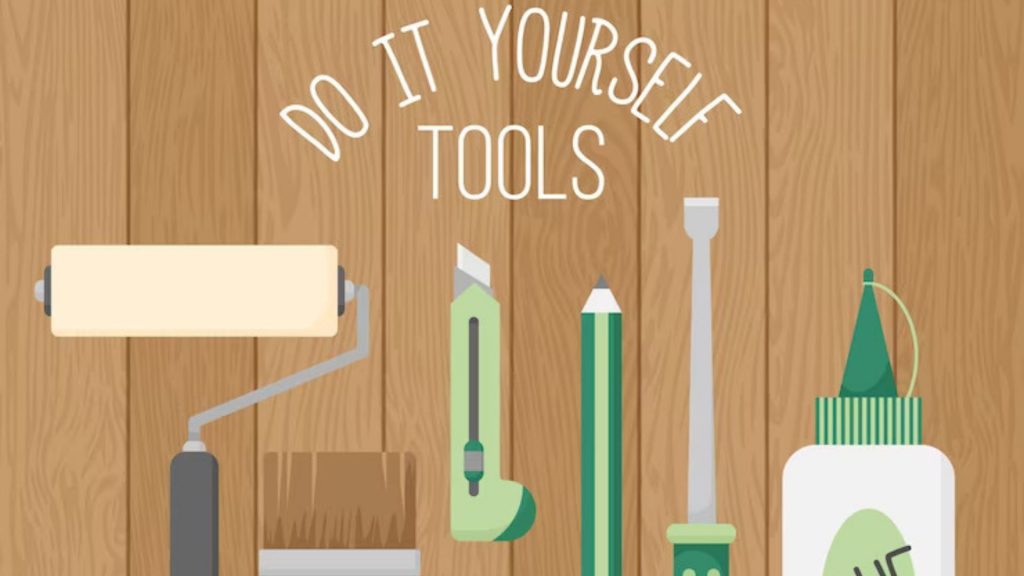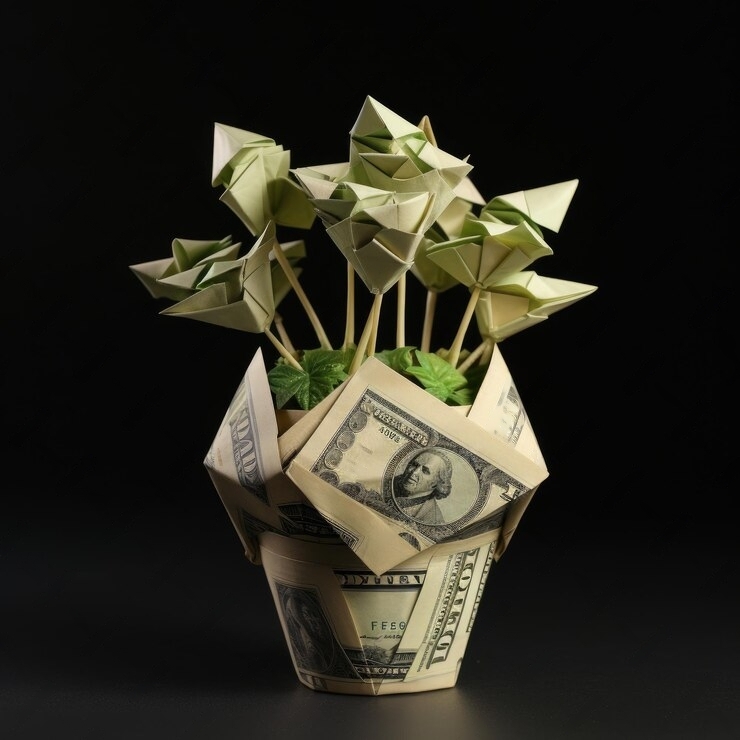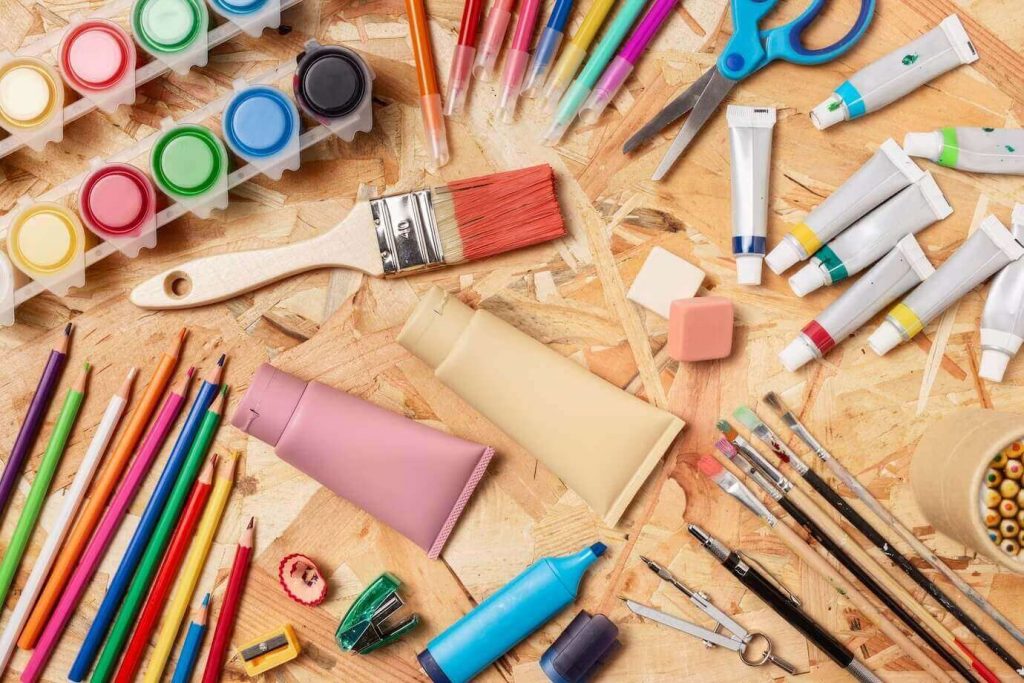
Starting a DIY project can often feel like a monumental task, especially when financial barriers stand in your way. However, with the evolving financial landscape offering flexible solutions, securing the necessary tools doesn’t have to be a stressful process. Whether you have no credit or bad credit, there are avenues available to ensure your project doesn’t come to a standstill before it even begins.
In the world of DIY projects, having the right set of tools can make all the difference. But, what happens when financial constraints prevent you from acquiring the tools you need? The answer lies in exploring the best options for DIY tool financing, which not only facilitate the acquisition of essential tools but also ensure that you don’t have to bear the brunt of financial stress while doing so.
Is Financing an Option for DIY Tools?
In recent years, the DIY industry has seen a significant boost, with more and more individuals embarking on personal projects to enhance their living spaces or to nurture a newfound hobby. However, one of the foremost questions that arises as you prepare for a DIY project is – How will you finance the essential tools needed for your tasks?
Understanding the Cost of DIY Tools
Before diving into the world of DIY, it’s crucial to have a clear picture of the potential costs involved, especially concerning the acquisition of necessary tools. Tools can range from being moderately priced to quite expensive, depending on their complexity and functionality. Your project might require specialized tools that come with a hefty price tag. Understanding the cost associated with these tools can help you budget your project efficiently and look into financing options that suit your financial situation.
To give you an idea of the potential costs, here is a table highlighting the approximate prices of various categories of DIY tools:
| Tool Category | Basic Option (Approx. Cost) | Mid-Range Option (Approx. Cost) | Premium Option (Approx. Cost) |
| Hand Tools | $10 – $50 | $50 – $150 | $150 – $300 |
| Power Tools | $50 – $150 | $150 – $400 | $400 – $800 |
| Gardening Tools | $15 – $50 | $50 – $100 | $100 – $200 |
| Electrical Tools | $40 – $100 | $100 – $300 | $300 – $600 |
| Painting Tools | $5 – $30 | $30 – $70 | $70 – $150 |
| Safety Equipment | $10 – $50 | $50 – $100 | $100 – $200 |
| Woodworking Tools | $100 – $300 | $300 – $700 | $700 – $1500 |
Financing Options Available in the Market
Thankfully, the market offers various financing options to ease the financial strain of acquiring DIY tools. These options can vary greatly in terms of repayment plans, interest rates, and loan tenure. From personal loans to specialized tool financing plans, individuals can choose an option that aligns well with their financial capabilities and project requirements. Researching these options and comparing the terms can lead to a well-informed decision, helping you to kickstart your project without financial hitches.
Select the Right Financing Type
Choosing the right type of financing is a critical step in your DIY journey. Here, we discuss a few popular options:
- No Credit Check Financing. This type of financing is ideal for individuals who have low or no credit scores. It allows you to secure funds without undergoing a credit check, thus increasing your chances of loan approval.
- Payday Loans. These are short-term loans that you can obtain quickly, typically to be repaid by your next payday. While they offer fast approval, they might come with higher interest rates.
- Personal Loans. A more traditional option, personal loans offer a way to borrow a larger amount with a fixed interest rate. Your credit score might influence the terms of the loan.
Before opting for a specific financing type, ensure to assess the pros and cons of each to find the one that best suits your needs and financial circumstances.
Tips for Individuals with Varying Credit Scores
Securing financing with a low credit score can be challenging, but not impossible. Here are some tips to help individuals with varying credit scores initiate their search for the right financing option:
- Understand Your Credit Score. Know where you stand in terms of credit score and how it can influence your loan terms.
- Research Different Lenders. Explore various lenders who specialize in offering loans to individuals with low or varying credit scores.
- Prepare Necessary Documents. Have all the necessary documents ready to speed up the loan application process.
- Consider Secured Loans. If you have assets to leverage, considering secured loans might be a viable option, as they often come with lower interest rates.
What are the Advantages and Disadvantages of DIY Tools Financing?
Embarking on a DIY project involves significant planning and budgeting, especially when it comes to procuring the necessary tools. Financing the purchase of these tools can be a sensible option for many, but like any financial decision, it comes with its own set of pros and cons.
Opting for financing to acquire DIY tools necessitates a thoughtful analysis of the financial implications involved. It is essential to understand how the interest rates, repayment terms, and potential fees will affect your overall budget. Moreover, the type of financing you choose can either facilitate or hinder your project’s progress, depending on the financial commitment required.
Benefits of Opting for Financing
Financing the purchase of DIY tools comes with several advantages, including:
- Ease of Access to Tools. Financing allows you to acquire the necessary tools immediately, without having to save up for them over a lengthy period.
- Cash Flow Management. Through financing, you can manage your cash flow better, allocating funds to different aspects of your project without depleting your savings.
- Credit Building Opportunities. When managed wisely, opting for financing can help you build or repair your credit score through regular, timely repayments.
- Access to Promotional Deals and Offers. Many financing options come with promotional deals, offering a chance to save on your purchases or benefit from deferred payment plans.
Things to Consider Before Choosing a Financing Option
However, financing also comes with certain considerations that you should be aware of before making a decision. Here are a few aspects to ponder upon:
- Interest Rates. Be cautious of high interest rates, especially with options like payday loans, as they can significantly increase the cost of borrowing.
- Potential Debt Cycle. Relying heavily on financing can sometimes lead to a cycle of debt, particularly if you opt for multiple financing options simultaneously.
- Impact on Credit Score. While financing can offer credit-building opportunities, mismanagement can also negatively impact your credit score.
- Read the Fine Print. Always read the fine print to understand the terms and conditions fully before agreeing to any financing option.
In conclusion, while financing can be a great enabler in your DIY project, it is essential to weigh the benefits and considerations carefully to make an informed decision.
Insight into the Role of Credit Scores
Credit scores are a numerical representation of your creditworthiness, calculated based on your credit history. In the context of DIY tools financing, a good credit score can potentially unlock better financing options with favorable terms. Lenders often use this score to gauge the risk associated with lending to you. Therefore, maintaining a healthy credit score can be beneficial when seeking financing for your DIY tools.
Finding the Best Interest Rates
Your credit score is directly proportional to the interest rates you may receive on loans or financing plans. Generally, a higher credit score can fetch you lower interest rates, saving you money in the long run. Here are a few tips to secure the best interest rates:
- Shop Around. Compare various financing options and interest rates offered by different lenders to find the best deal.
- Negotiate. Don’t hesitate to negotiate with lenders for better interest rates, especially if you have a good credit history.
- Credit Score Improvement. If possible, work on improving your credit score before applying for financing to secure better interest rates.
Options for Those with Bad Credit Scores
Not everyone has a pristine credit score, but that doesn’t mean that financing options are off-limits. If you find yourself in the category of less-than-perfect credit scores, here are a few options you might consider:
- No Credit Check Financing. These financing options do not require a credit check, making it easier for individuals with low credit scores to secure financing.
- Secured Loans. Opting for a secured loan, where you provide an asset as collateral, can be a viable option, as it often comes with lower interest rates compared to unsecured loans.
- Co-Signing. If possible, having a co-signer with a good credit score can improve your chances of securing financing with reasonable terms.
Is It a Challenge to Finance DIY Tools?
Financing DIY tools can sometimes seem like a daunting task, especially with the myriad of options available in the market. The process can be complex or straightforward, depending on various factors including your credit score, the amount you intend to borrow, and the lender’s terms and conditions. In this segment, we evaluate the complexities of the financing process, compare traditional retail financing with online loan platforms, and discuss how to prepare a budget that facilitates manageable repayments.
Traditional Retail Financing vs Online Loan Platforms
In the contemporary financial landscape, you generally have two primary avenues to secure financing – traditional retail financing and online loan platforms. Here, we compare the two:
- Traditional Retail Financing:
- Pros: Established reputation, face-to-face customer service, and potentially lower interest rates for customers with good credit scores.
- Cons: Lengthier approval processes, higher interest rates for customers with lower credit scores, and often requires substantial paperwork.
- Online Loan Platforms:
- Pros: Quick approval processes, minimal paperwork, and accessibility to a variety of loan products.
- Cons: Higher interest rates, potential for scams, and sometimes impersonal customer service.
Prepare Your Budget for Manageable Repayments
Before you commit to any financing option, preparing a realistic budget is crucial. This helps in ensuring that your repayments are manageable and do not strain your financial health. Here are steps to prepare your budget:
- Calculate Monthly Expenses. Begin by calculating all your monthly expenses to determine how much you can comfortably allocate towards loan repayments.
- Emergency Fund. Ensure to maintain an emergency fund to cover unforeseen expenses without affecting your repayment plan.
- Flexible Repayment Plan. If possible, opt for a financing option that offers a flexible repayment plan to avoid financial strain during tough times.
What Types of DIY Tools Can Be Financed?
Embarking on a DIY project requires a range of tools to effectively and efficiently bring your vision to life. Fortunately, many retailers and lenders offer financing options for a variety of DIY tools, making it easier for you to acquire the necessary equipment without a hefty upfront payment. In this section, we provide an overview of the types of DIY tools that are commonly financed, offer tips for choosing the right tools based on different financing schemes, and highlight special financing offers available for tool kits and bundles.
Overview of DIY Tools Available for Financing
The market offers a wide array of DIY tools that can be financed, catering to both novice and seasoned DIY enthusiasts. Some of the commonly financed tools include:
- Power Tools. These comprise drills, saws, grinders, and other electrically operated tools that are essential for various DIY projects.
- Hand Tools. Basic tools like hammers, screwdrivers, wrenches, and pliers that are necessary for most DIY tasks.
- Gardening Tools. For outdoor and gardening projects, tools such as lawnmowers, hedge trimmers, and shovels can be financed.
- Tool Kits and Bundles. These are comprehensive packages that include a mix of different tools, offering a one-stop solution for all your project needs.
Tips for Choosing the Right Tools Based on Financing Schemes
Selecting the right tools based on available financing schemes requires careful consideration. Here are some tips to guide you:
- Budgeting. Establish a clear budget that outlines the maximum amount you can allocate for financing the tools.
- Interest Rates and Repayment Terms. Be aware of the interest rates and repayment terms of different financing schemes to choose the one that aligns with your financial capabilities.
- Research and Reviews. Conduct thorough research and read reviews to ensure that you are investing in quality tools that offer value for money.
Special Financing Offers for Tool Kits and Bundles
To further facilitate the acquisition of necessary DIY tools, many retailers and lenders offer special financing offers for tool kits and bundles, such as:
- Zero-Interest Promotions. These are promotions where you can pay back the borrowed amount without any interest, usually within a specified period.
- Bundle Discounts. Some lenders offer discounts when you finance tool kits or bundles, providing a cost-effective solution for acquiring multiple tools at once.
- Flexible Repayment Plans. These are financing options that allow you to choose a repayment plan that suits your budget, making it easier to manage the repayments.
Conclusion
In conclusion, navigating the various avenues of DIY tool financing has become a simpler process, adaptable to a range of financial circumstances, including scenarios of no credit or bad credit. This guide has served as a road map, outlining the potential options and considerations you should take into account before committing to any financing plan.
As you prepare to embark on your DIY project, it is paramount to scrutinize the different financing schemes available carefully. This involves analyzing the interest rates, repayment terms, and aligning them with your budget to prevent any future financial strain.
Remember, the ultimate goal is to facilitate a smooth and enjoyable DIY project experience, without the shadow of financial stress looming over you. By being well-informed and making calculated decisions, you can ensure a successful and fulfilling project completion.
Here’s to embarking on a fruitful DIY journey equipped with the right tools and financial wisdom. Happy crafting!



